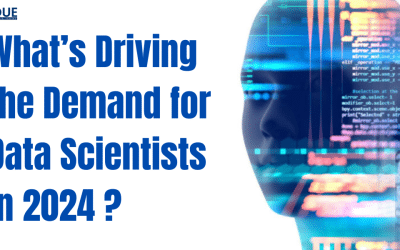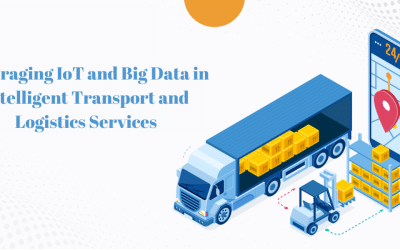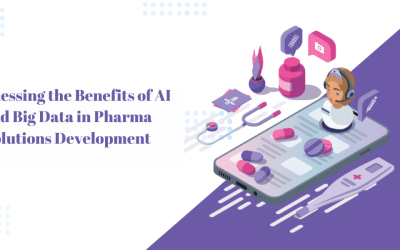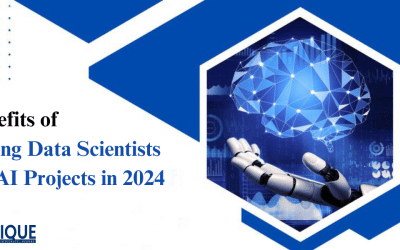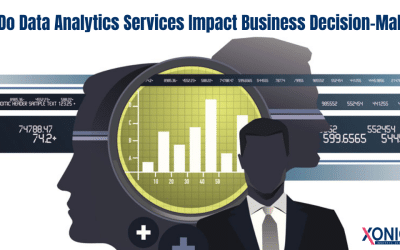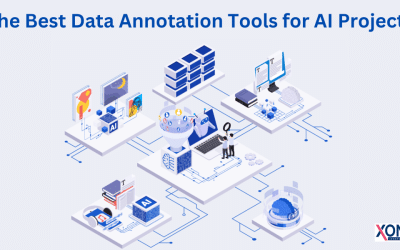Today’s digital environment makes data an ever-increasingly valuable commodity, making data analytics more essential to businesses and individuals. Data analytics will undergo a massive transformation in 2024 as enterprises harness their power for transformation across various fields formerly thought to be niche areas like finance or IT. As data volumes and types proliferate, deriving meaningful insights has become more challenging.
Data and analytics is a rapidly growing field that is predicted to expand further over the years ahead. As with the web, businesses can function without data analytics; however, their use can provide numerous advantages. By 2026, more than 65 percent of companies will employ Data Analytics Services to ensure optimal and personalized performance. Technological innovations, the expansion of data sets, and the demand for information derived from them will continue to expand data analytics applications.
This blog will examine the role of data analytics in 2024.
What Is Data Analytics?
Data analytics is the term used to describe the process of studying raw data to conclude from the information. Data analytics techniques and methods are now automated by mechanical methods and algorithms that work on humans’ raw data. It refers to looking at, decoding, and drawing valid conclusions from raw data to aid decisions. It uses diverse mathematical, statistical, and computational methods to identify patterns, trends, and insights. The process is usually performed using specially designed devices and programs for data analytics. The systems and applications can do complicated and long-running calculations, plot graphs, and make predictions using available data. These functions could help businesses in an array of ways.
The term “data analytics” is an expansive concept covering various types of analysis using data. All kinds of data can be subjected to data analysis methods for information utilized to enhance things. Analytics techniques for data can uncover patterns and statistics that could otherwise be overlooked amid the vast amount of data. Information gained can be used to optimize processes and increase effectiveness for an entire company or system. Manufacturing companies, for instance, typically record the run time, downtime, and work queues for different machines. They then review the information to plan work schedules and ensure that machines operate more efficiently.
Data analytics can do more than highlight production bottlenecks. Gaming companies employ data analytics to establish reward plans for players and ensure that the vast majority of players remain actively playing. Content providers use many of the same analytics to keep you viewing or changing the order of information to gain another experience or to get another click. Data Analytics Solutions are important because it can assist businesses in optimizing their performance. Incorporating it into a company’s business plan will lower costs by discovering more effective business methods.
Benefits Of Data Analytics
The importance of data analytics lies in the fact that it aids organizations in making educated choices based on the information and insight gathered from the data.
Improved Decision-Making
The most prominent benefit of data analytics is the improvement in decisions. Data analytics provides insightful, data-driven facts that help businesses analyze their client’s markets, operations, and. They recognize patterns, trends, and patterns. Furthermore, they can employ this data to make well-informed decisions supported by data and statistics rather than intuition. Companies can increase efficiency, reduce expenses, discover new avenues, and decrease risks by improving their strategies and making better-informed choices. As they’re based upon accurate data and analysis, Data analytics can also help companies make transparent and reliable decisions.
Increased Efficiency And Productivity
Data analytics can help organizations improve efficiency and effectiveness by automating and streamlining processes, maximizing the allocation of resources, and reducing manual work. Organizations can streamline their workflow by identifying bottlenecks and eliminating duplicate work. Furthermore, data analytics aids firms in determining the areas where efficiency can increase, such as efficiency, waste reduction, improved controlling inventory levels, and the optimization of the supply chain.
Enhanced Customer Experience
By providing companies with helpful information about customer preferences, behavior, and requirements, Data analytics allows companies to pinpoint areas where they could improve their customers’ satisfaction, such as decreasing wait time, enhancing customer service, or improving user interfaces. Analytics can help companies adapt their services to the specific needs of customers, which in turn helps them build stronger ties with them and increase loyal customers.
Improved Risk Management
Companies can identify patterns and relationships in various sources’ data, indicating potential dangers. Data analytics aid firms in detecting potential risks from online fraud, online security, or operational risk. They can also take preventative measures to minimize risks, keeping track of data in real time. Using data analytics to improve risk management will reduce the risk of financial damages, reputational harm, and other adverse results.
Competitive Advantage
Business owners can achieve an advantage over competitors through data analytics, allowing them to be more educated and driven by data. Analyzing data from different sources helps companies discern trends in the market, such as consumer habits, market trends, and competitor activity. Companies can use this data to enhance their strategy to identify opportunities and distinguish themselves from competitors. Data analytics help firms identify markets, anticipate customer requirements, and improve their products. It is easy to boost the market shares of their products, drive sales growth, and strengthen their image by using data analytics to gain an advantage in the market.
Essential Role Of Data Analytics In 2024
Understanding and using data analytics has become more critical in our fast-paced digital age. Let’s examine why data analytics will be essential in 2024.
Making Smart Decisions
The main advantage of data analytics is its ability to aid in sound decision-making. Data analytics transforms massive amounts of information into practical insights, helping companies make proof-supported decisions. This is essential in understanding the multiple market landscapes of 2024. Guessing isn’t enough anymore.
Boosting Customer Satisfaction
Understanding customers’ wants and needs is critical to a successful business. Data analytics digs into customer data to discover patterns and habits.
Streamlining Operations
The game’s key to efficiency, and data analytics plays the coach’s role. When they analyze operational data, businesses can identify areas they’re not doing well and discover methods to boost their performance. Whether it’s speeding up the supply chain or reducing cost-savings, data analytics will help companies run as well-oiled machines in 2024.
Staying Ahead Of The Curve
Data analytics can be essential in achieving global dominance in your field. It helps businesses detect new trends and opportunities before others, giving them an edge over rivals. In 2024, innovations in products and strategies derived from data analysis will distinguish the top performers from their peers.
Managing Risks
Planning is essential in an era of risks. Analytics help businesses anticipate possible pitfalls and make plans to avoid them. This foresight is crucial when dealing with high-risk areas such as cybersecurity and finance, where mistakes can lead to grave consequences.
Making a Difference
In addition to generating profits, data analytics holds the potential to make a difference in the world beyond just profit. The government and other organizations use the power of data to solve significant challenges such as healthcare and the protection of the environment. The year 2024 is when using data to benefit the public good is possible and should be a top priority.
Data Analytics Techniques
Data analysts may employ various strategies and methods to analyze and collect data. A few of the most sought-after methods are:
Regression Analysis
It involves analyzing the relation between independent variables and a dependent variable. The independent variables are employed to explicate the dependent variable and show how changes to these variables affect the dependent variable.
Factor Analysis
This involves analyzing a complicated data set with many variables and reducing them to a few. This technique uncovers patterns that appear much more challenging to identify.
Cohort Analysis
It disaggregates a data set into distinct data groups, usually into a consumer segment. Data analysts can use others who use data analytics to dig deeper into figures that pertain to a specific part of the data.
Monte Carlo Simulation
It calculates the probabilities of different scenarios occurring. These are often utilized to reduce risk and prevent loss. The simulations include a variety of parameters and values and typically provide better forecasting capability than the other analytical approaches.
Time Series Analysis
The system tracks the data in time and shows the relation between the worth of an individual data point and its occurrence point. This technique for data analysis is typically used to identify patterns in the cycle or to predict financial projections.
Data Analytics Process
The five-step process for data analysis can be described in the following manner:
Data Collection
Data collection is the first stage of the data analytics procedure, which involves gathering pertinent information from different sources. These could include structured information in spreadsheets, databases, APIs, and spreadsheets and unstructured data from the Internet or text documents.
Cleaning Data
This involves identifying and correcting the gathered information’s errors, differences, and inaccuracies. This assures that the data is accurate and appropriate for analysis. The most common tasks are addressing mistakes and missing values, standardizing formats, and dealing with outliers that might cause skew in the data.
Data Analysis
Data analysis applies mathematical, statistical, or machine-learning techniques to find patterns, trends, and information within a database. Regression analysis, descriptive statistics, clustering, and classification are methods to comprehend the information better. The aim is to extract relevant information to help answer specific inquiries or resolve identified challenges.
Data Interpretation
After you’ve obtained the results of your analysis, it’s time to interpret the data. The most common method of interpretation is formulating conclusions, determining the impact, and gaining actionable insight from the patterns and trends revealed by the analysis. The ability to interpret data requires knowledge of the domain and a thorough understanding of the Data Analytics Company or research objectives.
Data Visualization
Data visualization includes displaying information in graphic or visually appealing formats, including graphs, charts, and dashboards. This process converts large datasets into easy-to-comprehend and appealing visual depictions. Visualizations assist in communicating information, showing trends, and communicating research results.
Challenges Of Data Analytics And How To Fix Them
Many challenges could hinder risk management in gathering and analyzing data. There is a way to overcome them:
The Quantity Of Data Taken In
Information-intensive organizations of today rely heavily on data collection. With so much being collected, risk executives and employees may become overwhelmed with all the available data. A company could receive data regarding every event and interaction occurring daily, leaving the analysts with many information sets. An automated system for sorting and storing data is necessary. Manually doing this takes much time and is optional in the current environment. Automated systems will enable employees to utilize their time to make and act on data.
Data Collection That Is Meaningful And In Real-Time
With readily available data, drilling into the depths to find the most required information can be challenging. If employees feel overwhelmed, they might need more time to fully evaluate the data or focus on the metrics that can be collected quickly instead of the ones that contribute the most value. Additionally, if the employee is required to sort through the data manually and data, it can be challenging to get real-time information on what’s happening at the moment. Data that needs to be updated can have substantial adverse effects on decisions.
Data systems that can collect, organize, and alert users of changes will solve this problem. Employees can input their objectives and quickly produce a report that answers the most pressing concerns. Through real-time alerts and reports, decision-makers can be assured that they’re basing their decisions on accurate and reliable data.
Visual Representation Of Information
For information to be meaningful and understood, it is often required to be displayed visually using charts or graphs. Although these tools are beneficial, you need help to make yourself. Gathering data from many sources and applying it to the reporting tools is tiring and takes time. Robust data systems allow reporting at the touch of a button. Decision-makers and employees can access current information with an attractive and educational presentation.
Multiple Sources Of Data
The second issue is to analyze data from multiple disparate sources. Data from different sources are housed in various databases. The employees may need to be made aware of this, resulting in a lack of or incorrect analysis. The manual process of combining data can take a long time and may limit the analysis that can be easily seen. Employees can access all sorts of data from one place through a complete and central system. This eliminates the need to access multiple sources and allows cross-comparisons to ensure accurate information.
Inaccessible Data
Transferring data to one central system will not have much effect if the data isn’t readily accessible to those who need it. Risk managers and decision-makers require access to all information in an organization for insight into what’s happening at any particular moment, even when operating offsite. Accessing data ought to be the most straightforward part of data analysis. A reliable database will remove all accessibility problems. Authorized employees can safely access and edit information anytime, showing organizational changes and facilitating fast decision-making.
Low-Quality Data
There is nothing more damaging for data analytics than inaccurate information. If the input is not good, the output won’t be reliable. The most common cause of incorrect data is the mistakes that were caused during the entry of data. These can result in significant adverse outcomes if data analysis is employed to make decision-making. Another problem is that of asymmetrical data, which occurs when data from one system fails to accurately reflect changes in the other system, making it out of date.
Centralized systems eliminate the issues. Information can be entered automatically using drop-down or mandatory fields, leaving no space for human errors. Systems integrations guarantee that a modification in one place can be instantly transferred all over the board.
Top Data Analytics Trends For 2024 And Beyond
Let’s look at the top trends in analytics for 2024. This will help executives and managers remain on top of developments in the world of data. With a thorough understanding of these trends, businesses can keep ahead of their competitors and spur innovation to drive steady growth.
Data Fabric
Different data sources pose an issue that affects all industries. Data fabric is emerging as a critical trend to reduce the complexity of data and integrate it across multiple systems, like cloud, on-premise, hybrid devices, and edge environments. Data from departments such as HR and supply chain could be in different data areas. Data fabric lets professionals look at this information in one place and understand the relationships.
The unified structure provides a complete view of all data assets that allow organizations to cut through the silos of data, increase quality, integrate governance, and improve access. Additionally, it helps companies communicate data effectively and work in tandem to gain insights from data and enhance decisions.
Augmented Analytics
Augmented analytics involves the application of artificial intelligence, machine learning, and natural processing of languages (NLP) to boost data analysis. It assists organizations in automatizing diverse processes, including processing data, data sharing, data discovery, and data analysis. Augmented analytics could perform what the data scientist does. In addition, AI/ML systems can process unstructured data. This allows businesses to monitor calls automatically and record their interactions, reducing the need for several workers to listen to calls and then write notes.
One of the major benefits of enhanced analytics is that all kinds of businesses can utilize it, and it doesn’t require the user to possess a vast knowledge of working with data. This is a great benefit for companies that want to integrate self-service analytics into their business.
Data Mesh
Data mesh is a system that allows data to be decentralized and structured by a particular industry domain, such as sales, marketing, and services. The teams involved can then take control of their data and decide based on it. The domain’s requirements can implement particular technology and governance procedures. The goal is to allow the various teams in an organization to experiment and innovate in an open and interoperable system.
One example could be in finance, where data sharing can be complex and comes with security and privacy dangers. Teams are required to collect data from multiple sources to produce reports. Through data mesh, they are able to own the data and store it in data lakes. Other teams that need it can find the data via the catalogs and request access. This also allows them to determine where the data came from.
Data-as-a-Service
Note that some companies, including multinational corporations, can be equipped to store and analyze information. This is the point at which Data-as-a-Service (DaaS) is a solution. DaaS provides a cloud-based management system where storage, data collection, and analytics services are available on a pay-per-use or subscription basis. Customers can use a broad array of structured and unstructured data without the need to store the data physically. DaaS guarantees high-quality data that is compliant with privacy and security rules. Small and medium-sized businesses, in particular, benefit from the savings because they don’t need to spend money on costly hardware or software infrastructure.
Synthetic Data
The use of synthetic data is increasingly important in the data analytics industry. Synthetic data is a form of data generated by artificial means. It has statistical properties similar to accurate data but is not linked to real identification numbers. To implement AI/ML systems, enterprises require massive data sets to train models, and often, they need help with a high-quality set of data. Synthetic data is quickly generated and utilized to analyze.
AI And ML
These two technologies have created rapid disruptions in data analytics, which will likely continue over the next few years. AI-driven software allows businesses to automate manual tasks, discover correlations, and offer insights from massive datasets. The models can also analyze millions of records to find exact relationships.
ML model-based systems can track information, detect patterns and anomalies, and alert teams immediately without human intervention. For example, in the case of a cyberattack, computers can instantly detect the threat and issue an alert to the security department. The ability to personalize experiences is an additional benefit of using AI and ML techniques. Companies can design customized customer experiences by analyzing their preferences and behavior. This improves customer satisfaction and retention.
Edge Analytics
The volume of data grows daily; cloud computing needs to be more equipped and hampered by bandwidth limitations and network disruptions. Edge computing offers a more efficient alternative. It is analyzing data in devices located on the networks’ fringe. Edge computing centralizes data processing and allows for real-time data analysis. The only valuable information in compressed form is transferred to the central server. It offers various advantages, such as efficient resource use, better data security, ease of scaling, quicker data processing, and lower cost.
Data Governance
One of the most heated topics regarding Gen AI use is the ethical usage of data. Companies must be accountable for the transparency and accountability of data collection and use. Since accountable AI is a top priority, robust regulatory frameworks and industry-wide standards are evolving to tackle these ethical issues.
Natural Language Processing (NLP)
One of the most vital branches of AI is natural language processing. (NLP) allows systems to interpret, understand, and master human language in any text or audio format. It has enabled businesses to get unstructured data from various sources, including email, social media, webchats, telephone forms, and calls. This technology is getting increasingly advanced and more refined every day. Grammarly’s ability to classify text Voice assistants such as Alexa and Siri and the translation of languages performed by Google Translate are all applications of natural technology for processing language.
Predictive and Prescriptive Analytics
Predictive analytics has undergone massive changes and has become advanced. Using cutting-edge technologies like deep learning and ML models, predictive analytics can extract data from historical sources to anticipate future behavior, trends, and results. Airline companies can utilize predictive analytics to calculate the ticks offered at a specific cost. Like hotels and resorts, accommodation facilities can maximize profits and occupancy by anticipating the footfall of guests during any particular evening.
Prescriptive Analytics is one move towards the future. It employs graph analysis, simulating algorithmic heuristics, and ML to help determine the best decisions that need to be implemented to reach a target. Businesses can use this to optimize their operations and services and improve their logistics, inventory, and supply chain procedures.
Conclusion
Data can enhance a profitable business but can’t make a failed company successful. Data analysis can’t help with a product, service, or market’s poor quality. It can, however, be crucial if you’re trying to stay ahead of your competitors. In this age of massive information explosion, mastering data analytics techniques will help your business. It provides a clear and precise picture of the behavior of customers and the trends in markets, which allows for better decision-making and ensures you are ahead of the curve in a constantly changing marketplace.
While we face the challenges and opportunities ahead of us in 2024, the synergy between data analytics is revealed as a convenient recipe to ensure that organizations not only last but prosper in the information-driven future. When you’re familiar with the nuances and complexities of data analytics, you can use data as a strategic asset and benefit your business’s success.





